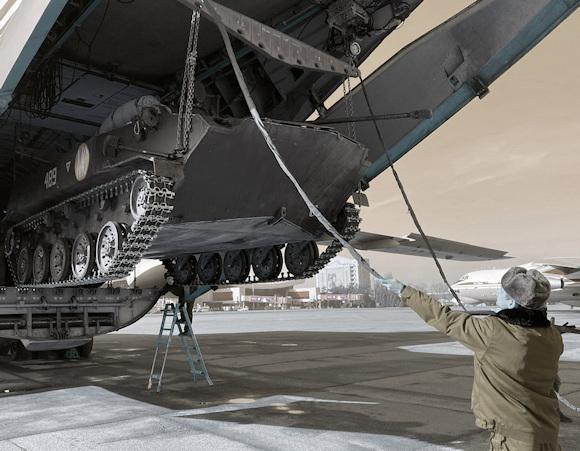For fans of Risk, Kazakhstan is one of those countries that, at the time of the USSR, floated in a geographical limbo unknown to most. The Soviet collapse revealed the existence of the "stan”, A Persian suffix associated with geopolitical extensions such that they can no longer be considered only as parts of an indistinct region on which to pour colored tanks.
Kazakhstan, nestled between Russia, which uses the Baykonur cosmodrome, and China, is the largest landlocked country in the world, with porous borders, with a territorial extension greater than that of the whole of Western Europe but with only Approximately 19 million inhabitants, of which 3,5 of Russian ethnicity.
Kazakhstan, counted among the developed countries and with the strongest economy in the Central Asian region, has risen to the honor of the Christmas news for the brief but intense uprising that shook it.
Its regional political ambitions find personification in the capital Nur Sultan, already Astana, city that stands out in the steppe in an almost desert area where human activities reach levels approaching zero; to its futuristic architecture Sultan clashes with the Kazakh past when, in the communist era, political prisoners were destined or nuclear tests were conducted in those steppes.
Kazakhstan, which is and will remain an integral part of the russosphere, is rentier state capable of maintaining a neutral multi-vector political position, and has significant quantities of valuable natural resources; in fact it occupies the 12th position in the world in terms of oil reserves1, the 14th as regards natural gas, which equals the reserves of Canada and Kuwait, also considering the new fields discovered in the Caspian Sea; the 2nd for coal production; the 1st for the export of uranium2.
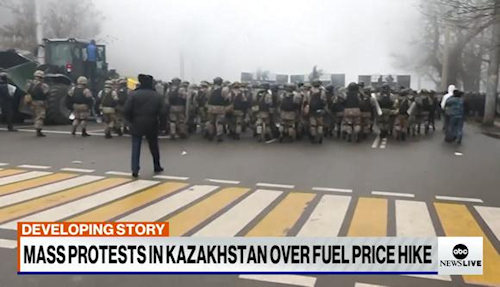
The realistic flexibility of international relations suggests to Washington to collaborate with Nur Sultan despite the problems in terms of democracy and human rights, to Moscow to supply weapons and to China to allow Kazakh agricultural producers access to its internal market.
Despite Kazakhstan being an energy hub, self-sufficiency in this area was not immediate; after independence, production fell as a result of an aggressive and chaotic form of privatization. If on the one hand these resources constitute the backbone of the Kazakh economy, on the other they make the country vulnerable to trends in the energy market. Only in 2003 did Kazakhstan become a direct exporter of gas and, from 2013, also of energy. The main source of Kazakhstan's income comes from oil extracted mainly in the three north-western fields of Kashagan3, Tengiz and Karachaganak.
However, Kazakhstan pays for the absence of sea outlets, with the exception of the Caspian Sea, considered an internal extension, which makes Russia a mandatory transit area for oil and gas transport to the West. Consider how Moscow benefits from regulating the price of energy resources, as well as cultivating a strategic interest in controlling supplies to countries such as Ukraine, considered to fall within its sphere of influence. This led Nur Sultan to look to China, a country capable of satisfying the needs of commercial diversification.
Kazakhstan remains one of the main recipients of Chinese infrastructure projects in the BRI area, announced in 2013 by President Xi Jinping right in Astana at the Nazarbayev University, projects embodied by the 2.300 km long oil pipeline that goes from the Caspian Sea to the Chinese region of the Xinjiang.
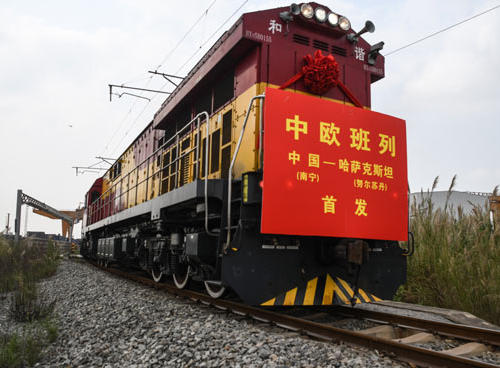
Given that Beijing is investing billions in renewable energy to reduce its energy dependence, Kazakhstan cannot afford the luxury of having enemies, as any form of political instability that threatens development plans is certainly counterproductive; although the subject of large foreign investments in the exploitation of hydrocarbons, the economic growth of the early XNUMXst century is explained by an increase in consumption and expansion of the construction and financial sector, but not by the creation of new wealth, an element that explains social and economic inequalities. .
As in all of Central Asia, Salafism, here in a quietist form which recognizes the secular state but which does not thereby arouse trust, is perceived as a form of soft power Saudi sectarian and opposed by state-backed Hanafism.
Governed for thirty years by Nursultan Nazarbayev, who resigned from the presidency of the National Security Council, Kazakhstan passed into the hands of Kassym-Jomart Tokayev, a promoter of political reforms nevertheless never started and in fact the bearer of stagnant continuity. Tokayev has wet the presidency with liberal-democratic reforms but of little substantial consistency, which have kept an elitist status quo intact.
It must be said that, until a few months ago, Kazakhstan was considered a model progressive autocracy, an example of a transition of power that had aroused interest and curiosity, while persisting the increase in labor costs, a poor division of wealth, the corruption, a distressed health system.
With its uprisings, Kazakhstan has aroused interesting fears regarding regional stability, given that this is yet another4 Country subject to a revolt and which invoked the protection clause of the CSTO5, the CIS Defense Pact, which confirms Moscow as the exclusive interpreter of area security.
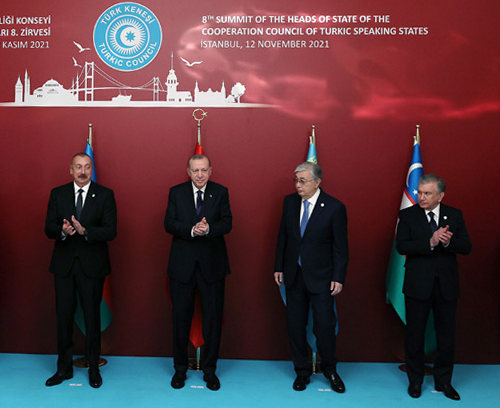 The picture of authoritarian regimes was completed with solidarity with Nur Sultan on the part of China and Turkey, the latter united to Kazakhstan by participating in the Council of Turkish-speaking countries, and to which reasons of expediency connected with its membership of NATO advise against dispatch of troops. While the government has classified the protests among the exogenous - but unidentified - attempts of coup, the protesters have traced the complaints to the high cost of living and in particular to the increase in the price of LPG, sold according to market laws resulting from liberalization, to the rising inflation that penalized the middle and working class, and to the energy-intensive activity of the thousands of Chinese companies which, having moved to Kazakhstan, pursued the computer mining of cryptocurrencies; the step against the executive was very short, even if it would be reductive to limit political considerations to these aspects, harbingers of class clashes, given the inequalities that mark socio-economic reality from within.
The picture of authoritarian regimes was completed with solidarity with Nur Sultan on the part of China and Turkey, the latter united to Kazakhstan by participating in the Council of Turkish-speaking countries, and to which reasons of expediency connected with its membership of NATO advise against dispatch of troops. While the government has classified the protests among the exogenous - but unidentified - attempts of coup, the protesters have traced the complaints to the high cost of living and in particular to the increase in the price of LPG, sold according to market laws resulting from liberalization, to the rising inflation that penalized the middle and working class, and to the energy-intensive activity of the thousands of Chinese companies which, having moved to Kazakhstan, pursued the computer mining of cryptocurrencies; the step against the executive was very short, even if it would be reductive to limit political considerations to these aspects, harbingers of class clashes, given the inequalities that mark socio-economic reality from within.
The era of Nazarbayev, author of a social pact that he held for 30 years, has thus come to an end, torn by protests that spread rapidly in a country where the young labor market has been hit hard by the pandemic, where the former capital Almaty has become the epicenter of the clashes, and where both the lack of a centralized rebel leadership and the effect of the decades-long repression carried out by the government on the opposition were highlighted.
The dissent was addressed in two directions: on the one hand, the most educated and based social group in the two main cities6 it maintained its presence on social networks, at least until the government started blocking the internet; on the other, the less affluent classes took to the streets.
If a winner were to be designated, the palm would go to Tokayev, chosen by the elder Nazarbayey to oversee the transition of power. Act of wisdom? Yes, but not that imaginable; in fact, the old leader has identified a replacement deemed not in a position to harm the old establishment, which has remained tied to the levers of control, trusting in the permanence of faithful men, such as Masimov, among the first scapegoats to fall together with Prime Minister Askar Mamin.
Tokayev, who did not scruple to give the order to shoot the demonstrators, managed to benefit from the collapse of the old order, with a request for external help that appeared reckless but promptly mitigated by the speed of the operations carried out.
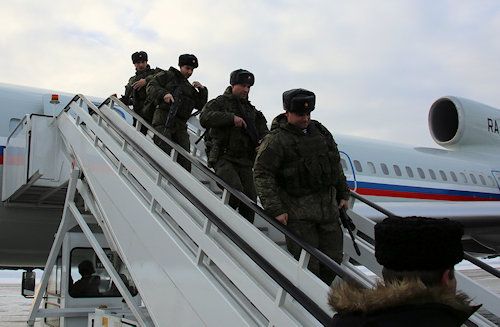
The rapid Russian return to the bases certified Tokayev's ability to establish concrete relations with Moscow, however satisfied both by having preserved the Kazakh regime and by having demonstrated efficiency of the fraternal help of CSTO extension.
Experience has taught that in the former Soviet space, protests never lead to reforms but to new repressions, as in Belarus and in Kazakhstan itself, the scene of the executive intervention in the city of Zhanaozen already in 2011 due to the difficult conditions of work in oil plants.
The protests concerning the asymmetrical relationship with China, which took place against the dependence on Beijing, which in any case caused Kazakh investments to decrease, should not be underestimated; against the presence of Chinese companies, personnel and goods associated with both the exchange of crude oil with technology; against the feared persecution of Uighurs in Xinjiang; against the erosion of sovereignty.
There is no doubt that China7, which maintains relations with crude oil producers in the Persian Gulf, is a country currently able to provide economic insights not in the ropes of Moscow, more devoted to war aspects, as there is no doubt that Beijing fears Kazakh instability as a potential threat to energy imports, BRI projects, and security in Xinjiang, a region joined to Kazakhstan by a 1.770 km border; it is no coincidence that the Dragon offered itself as a shield to protect against interference and external infiltrations, especially if having the appearance of a color revolution, and in consideration of the Afghan situation, a sore point of US foreign policy, with Washington called to increase its presence in Central Asia in competition with Moscow, which plays on decidedly more favorable terrain.
Turkey also falls on the agenda of Kazakhstan, given the geostrategic position that leads Nur Sultan to be a springboard towards the Russian north, the Chinese east and the Turkestan south; it is no coincidence that Ankara is conducting a policy based on Pan-Turkism and on the common cultural identity that brings both countries to the seats of the Turkish Council, politically beaten by the Kazakh-Muscovite realism, and economically by the storm that is afflicting Turkey.
 In the face of Russian interventionism, the political inertia of the EU and the UN, which have not been able to propose anything effective and immediate. Italy also enjoys its share of concern, given the economic partnership that places it in third place in the ranking of Kazakh trade after Russia and China, but in an inane diplomatic position similar to the multilateralist and scarcely incisive one of the EU.
In the face of Russian interventionism, the political inertia of the EU and the UN, which have not been able to propose anything effective and immediate. Italy also enjoys its share of concern, given the economic partnership that places it in third place in the ranking of Kazakh trade after Russia and China, but in an inane diplomatic position similar to the multilateralist and scarcely incisive one of the EU.
The protests will not lead to a change of regime, but to a change in the Kazakh foreign policy posture, which will find itself attracted to Tokayev's pro-Russian line. The Kremlin therefore turns its gaze to the east, identifying Kazakhstan with the eastern arm of the western geopolitical pincer, in a context that sees the Atlantic west crossed by internal crises, and a Central Asian theater marked by Azerbaijani-Armenian friction.
The protests are accompanied by various possible causes; beyond the unsubstantiated foreign presences, which however justified the intervention of the CSTO, there are conflicts between old and new generation leadership groups, among whose folds Tokayev has shown an unsuspected shrewdness. With a'infoware propaganda in progress, the rule of suspicion makes objective analyzes impossible, which remain marred by smoke screens and mirrors. The protests are therefore not the expression of a sporadic and isolated discontent, but rather the indicator of the search for a political mobilization capable of re-establishing the social pact. The Russian return, preferred to a pervasive Chinese appearance, arises from this point of view.
The regional hegemons do not intend to leave a Kazakhstan source of turmoil: for this Afghanistan is enough; further interference would induce Moscow interventions aimed at reducing security risks, with Beijing acquiescing on the division of the central Asian influence zones. The creeping territorial claims cannot be forgotten: for Russia, Kazakhstan is a creation of Nazarbayev, for China, the control of the Dragon on Kazakh territory is a full-blown thing.
Two notes of color: the immediate departures for quieter shores by the wealthy Kazakhs, and the consideration - half-mouthed - of what could happen tomorrow in the squares of those who, today, offered help.
1 It accounts for 60% of its exports and over 40% of the state budget revenue
2 The Kazakh reserves constitute 12% of the planetary total; The country, which became the first producer in the world in 2009, has reached 28% of global extraction, and is exported to China, Russia, Japan, Canada and India.
3 Caspian Sea
4 Let's remember Ukraine and Belarus
5 Collective Security Treaty Organization (Armenia, Belarus, Kazakhstan, Kyrgyzstan, Russia, Tajikistan)
6 Nur Sultan and Almaty
7 The Kazakh region near the Chinese border is home to the China-Kazakhstan tax-free border area (administered by the International Center for Business Cooperation, or ICBC), the Khorgos Gateway Dry Port, the Altynkol level crossing and a major land crossing in construction.
Photo: MoD Russian Federation / abcNews / Xinhua / presidency of the republic of Turkey / Farnesina

